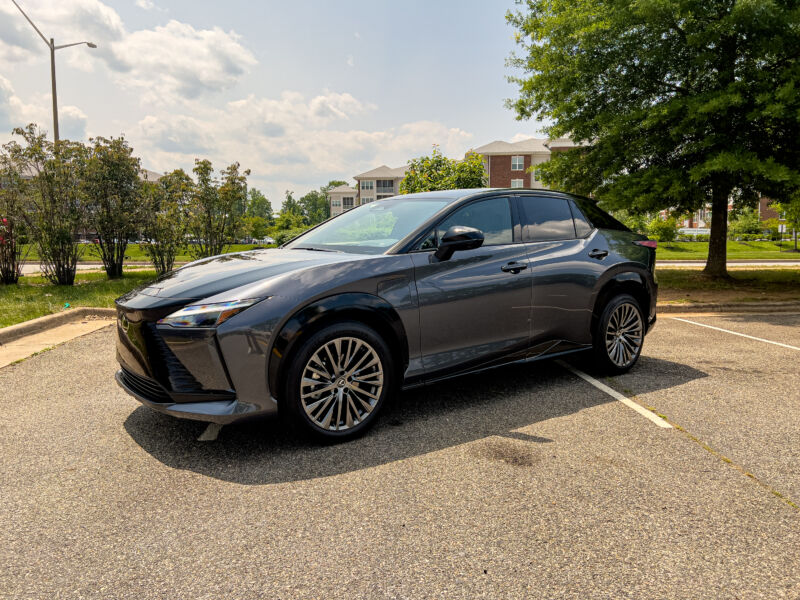Lexus’s first EV, the RZ 450e, is pretty mid—glitchy and inefficient

Enlarge / This is Lexus' first battery-electric car, the RZ 450e. (credit: Jonathan Gitlin)
When Lexus started building luxury cars at the end of the 1980s, it took the rest of the auto industry a bit by surprise. Toyota wanted to show off that it could build the best car in the world, and the original Lexus LS400 was a credible effort to do just that. Three decades on, Lexus now has its first battery-electric vehicle. BEVs are Lexus' future-it wants to sell a million of them by 2030, starting with this car, the 2023 RZ 450e. But don't expect this electric Lexus to make the same kind of splash as the LS400 did-this is not a car that's going to challenge for best in class.
It is fair to say that the industry-wide shift to battery-electric vehicles has caught out the world's largest automaker. Toyota was an early front-runner when it came to electrification with hybrid powertrains-the Prius is now in its sixth iteration and has sold millions-but it has been much more cautious when it comes to BEVs. There was an early dalliance with the RAV4 EV, which showed up in small numbers in the US before being cancelled in 2002, and then not much until very recently. Now Toyota has developed its first modern BEV, using lithium-ion (rather than nickel-metal hydride), called the bZ4x. There's a badge-engineered Subaru version, too, and this Lexus variant as well.
DesignInstead of starting with a clean-sheet design, like rival Volkswagen Group, Toyota decided to modify its existing modular vehicle architecture (called TNGA) to allow it to make BEVs (the new architecture is known as e-TNGA). I was going to write that it's a relatively small crossover by 2023 standards until I checked the dimensions against other EVs; at 189.2 inches (4,806 mm) it's actually longer than a Ford Mustang Mach-E, Volkswagen ID.4, or Jaguar I-Pace-perhaps the RZ 450e's closest spiritual competitor. (It's a pretty average 74 inches/1,880 mm wide and 64.4 inches/1,636 mm tall.)